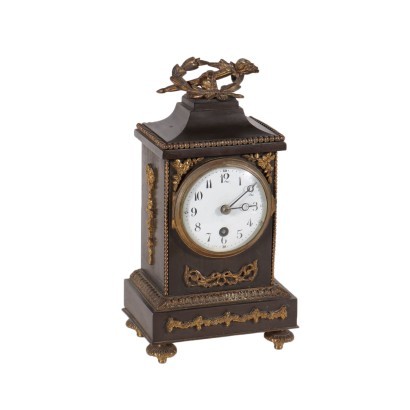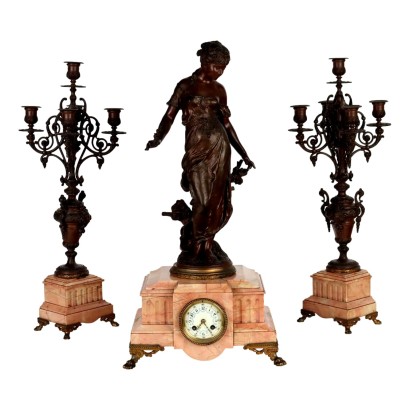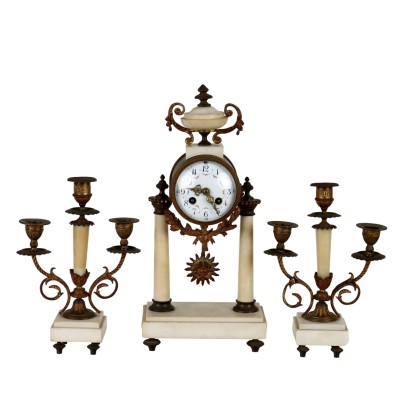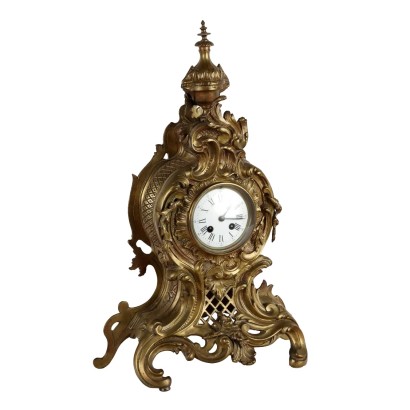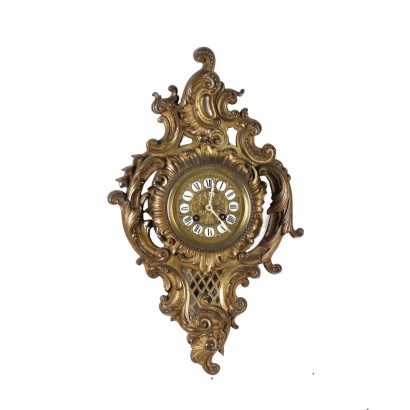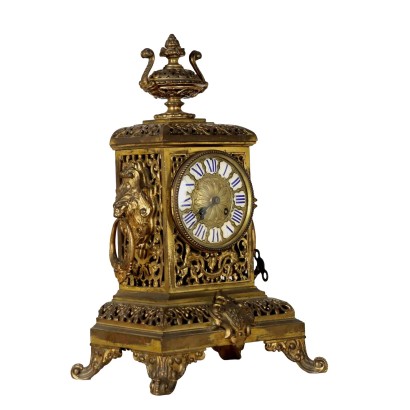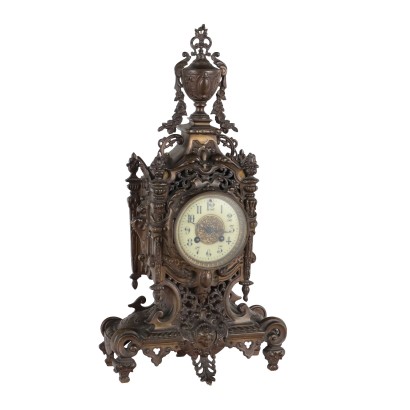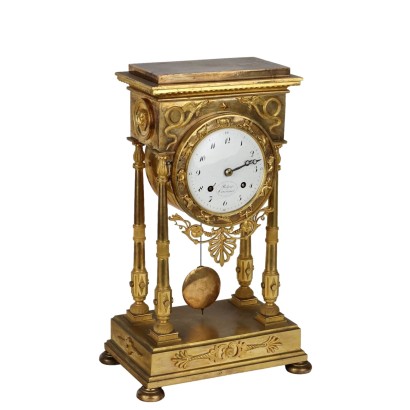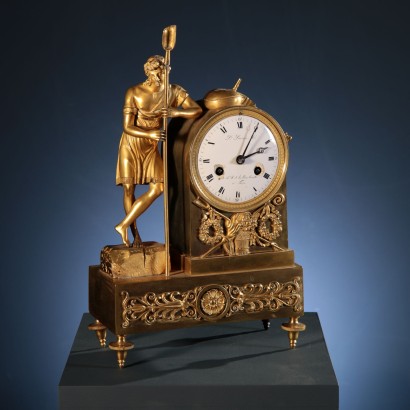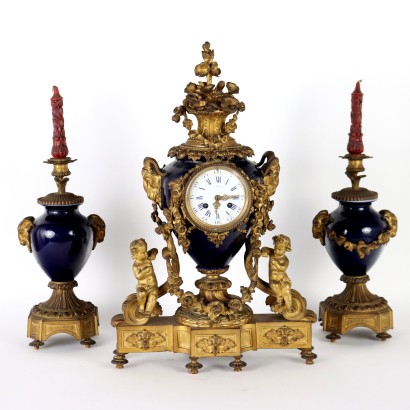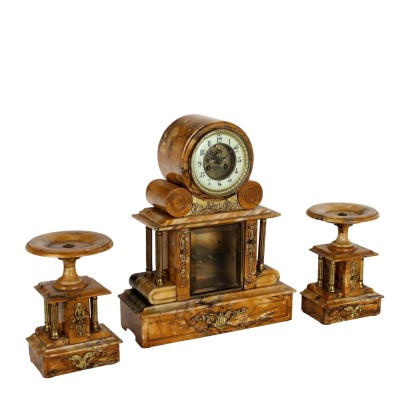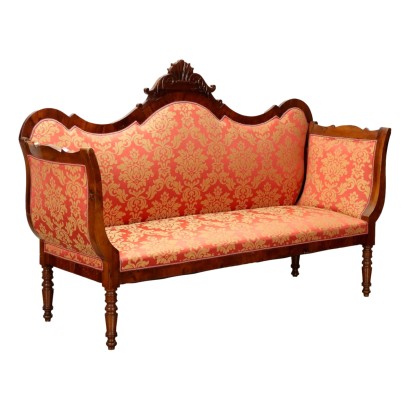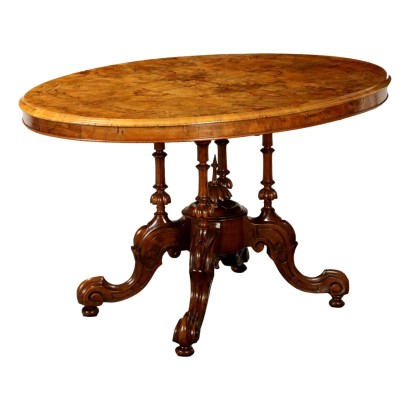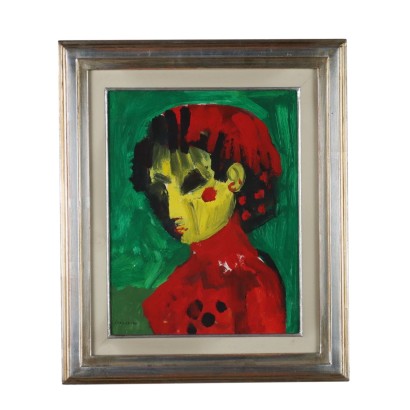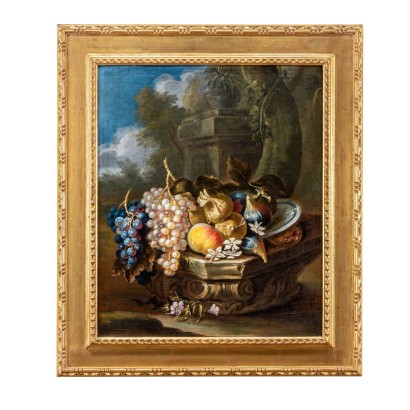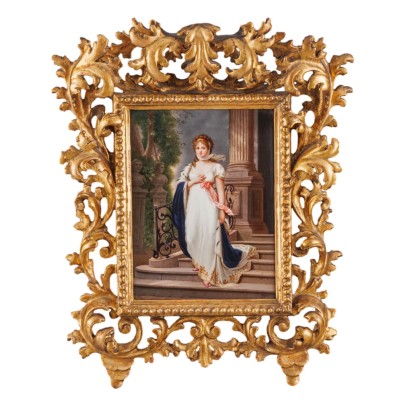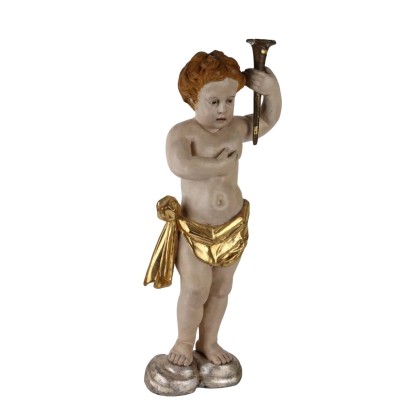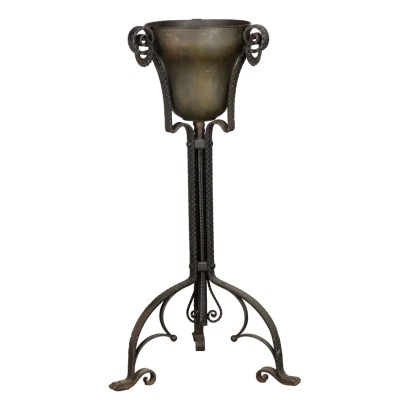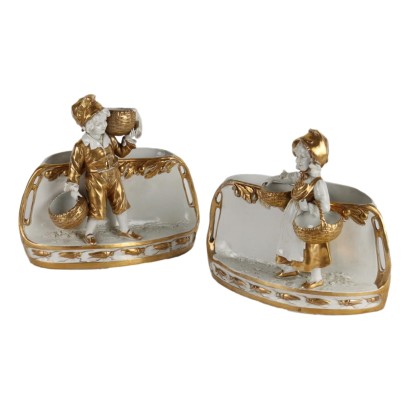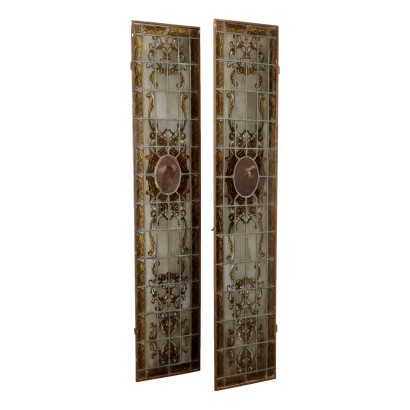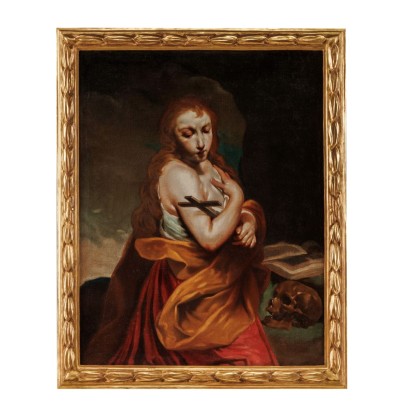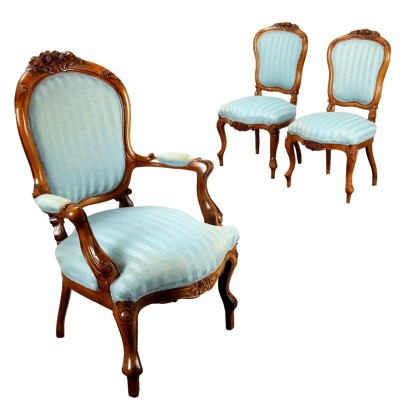Napoleon III Table Clock Gilded Bronze France 19th Century
Features
Style: Napoleon III (1848-1870)
Age: 19th Century / 1801 - 1900
Origin: France
Material: Bronze
Description
Dark bronze table clock with gilded bronze plant motif decorations; at the top it has a torch with a laurely crown. Movement with cylinder escapement and enamelled metal display with Arabic numeral hours protected by curved glass cover. Original winding key.
Product Condition:
Object in good condition. Wear consistent with age and use. Any damage or loss is displayed as completely as possible in the pictures. Product with a Certificate of Authenticity and Lawful Origin.
Dimensions (cm):
Height: 28
Width: 14
Depth: 11
Additional Information
Style: Napoleon III (1848-1870)
With Napoleon III as emperor, France experienced a period of extraordinary economic prosperity, a factor that allowed it to reconstitute a formidable war machine.In short, we relive the dream that already belonged to Bonaparte: France, a great European hegemonic power.
Euphoria and grandeur find perfect correspondence also in the furnishings that characterized the Second Empire.
In Italy, the Napoleon III style had initially insignificant effects, imposing furnishings of imitation Louis XVI with an ornamental value only resolved in carving and completely devoid of bronze trappings, in compliance with a more sober taste that will always characterize the Italian client.
Only in the first decades of the twentieth century did "French" furniture find important commercial outlets in our country.
This is the name of the artistic production of France under Napoleon III, president in 1848 and emperor from 1852 to 1870, the year of his abdication.
More than a style, we can speak of a set of styles, or rather of revivals, given that in recent years the eclectic trend that had already appeared during the previous Louis Philippe reign developed to its extreme consequences.
The drive to re-evaluate history and the Middle Ages also derives from the romantic spirit, as well as from the nationalistic one.
The houses are then decorated mixing different styles and drawing from both the past and the East, with a trend towards luxury and pomp that reflects the emperor's desire for grandeur.
In general there is a return to the whole of the eighteenth century, with particular attention to Louis XVI, the fashion for dark woods (ebony and rosewood), exotic ones and bronze applications is confirmed.
From the seventeenth century the inlay created by André-Charles Boulle, the great cabinetmaker of Louis XIV who created an inlay technique in gilded bronze and tortoiseshell, is recovered, in which one of the two materials acts as a background for the perforated designs of the other. < br/> Compared to the refinement of the original pieces, the "Boulle" furniture of this period is heavier and even more eye-catching, given the addition of bright colors through painted foils or parts in blue, red or green colored horn.
Always in the wake of eclecticism, Venetian furniture arouses particular interest, which stimulates the production of polychrome and gilded furniture, in which figures of Moretti often appear as a support.
The latter are also to be connected to the passion for the exotic that leads to the fashion of chinoiserie (especially after the conquest of Beijing in 1860).
Find out more about the Napoleon III style with our insights:
a Napoleon III Secretaire to discover the furniture with hiding places
A Napoleon III table to discover the caryatid
FineArt: Chandelier - O. Lelièvre & Susse Frères, Paris, last quarter of the 19th century < / a>
FineArt: Napoleon III sideboard
Age: 19th Century / 1801 - 1900
19th Century / 1801 - 1900Material: Bronze
Other customers have searched:
Orologi, orologio dorato, orologio da camino, orologio da appoggio, orologio da tavolo, trittico, pendola, parigina..
Vuoi conoscere di più sugli orologi? Consulta i nostri articoli del blog e di FineArt che ne parlano:
Leggi di più
Le lancette degli orologi ci insegnano cos'è il traforo
Cartel Barat a Paris Orologio in bronzo dorato
Orologio Phippard Japanned Longcase, secondo quarto XVIII secolo Orologio a torre
Trittico con orologio e coppia di candelabri, Etienne Lenoir – Henry Dasson, Francia, seconda metà XIX secolo
Orologio Impero da appoggio
Orologio “Carro di Telemaco”
Orologio da mensola, Camillo Borghese, Torino, 1808 – 1814
Orologio a Vaso, Francia, Primo Quarto XIX Secolo
Orologio Impero a pendolo “Pegaso e Perseo” Lesieur à Paris, 1815 ca.
Leggi di più
Le lancette degli orologi ci insegnano cos'è il traforoCartel Barat a Paris Orologio in bronzo dorato
Orologio Phippard Japanned Longcase, secondo quarto XVIII secolo Orologio a torre
Trittico con orologio e coppia di candelabri, Etienne Lenoir – Henry Dasson, Francia, seconda metà XIX secolo
Orologio Impero da appoggio
Orologio “Carro di Telemaco”
Orologio da mensola, Camillo Borghese, Torino, 1808 – 1814
Orologio a Vaso, Francia, Primo Quarto XIX Secolo
Orologio Impero a pendolo “Pegaso e Perseo” Lesieur à Paris, 1815 ca.
Product availability
The product can be seen at Milan
Disponibilità immediata
Pronto per la consegna in 2 giorni lavorativi dalla conferma dell'ordine del prodotto.
Consegna tra i 7 e i 15 giorni in tutta Italia. Per le isole e le zone difficilmente raggiungibili i tempi di consegna possono variare.



